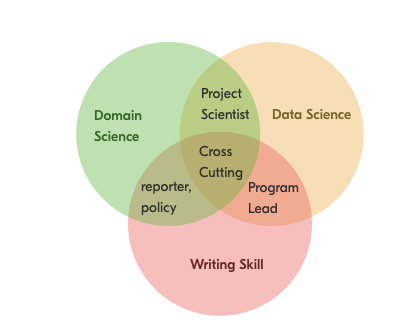
Ecosystem Science and Sustainability 330
Quantitative Reasoning for Ecosystem Science

Welcome!
Welcome to Ecosystem Science and Sustainability 330: Quantitative Reasoning for Ecosystem Science! This course is your entry point to understanding data science tools and techniques essential for solving today’s most pressing environmental challenges. We aim to equip students with the skills needed to address complex challenges in ecosystem science by emphasizing the integration of open-source technologies, statistical methods, spatial data analysis, and machine learning to foster reproducible, data-driven insights.
Who This Class is For:
This course is ideal for students in ecosystem science, sustainability, and related disciplines who want to enhance their data science skills. Whether you’re new to coding or looking to expand your expertise, ESS 330 provides the resources to address critical environmental challenges with data-driven insights. By the end of this course, students will have the skills (and confidence) to tackle a wide range of applied and theoretical questions, including:
- How can I efficiently organize, store, and share data for a research project?
- How do I set up a reproducible workflow using R, Git, and GitHub to collaborate with others, or, my future self?
- How do I clean, merge, and visualize messy data sets from different sources?
- What statistical methods should I use to test my hypotheses?
- How can I identify patterns and relationships in environmental data sets?
- How can I predict ecosystem changes using regression and machine learning models?
- How do I design, train, and evaluate models to ensure reliable predictions?
- How can I analyze and forecast environmental trends using time-series data?
- How do I process and analyze spatial data to answer location-based questions?
- How can I visualize and interpret geospatial trends in ecosystem variables?
- How can GIS tools be integrated into larger data science workflows?
Careers
Graduates of this course will be equipped to pursue careers as geospatial analysts, ecological modelers, data scientists, hydrologists, or climate scientists. You’ll be prepared to tackle pressing environmental challenges in academia, government, industry, or NGOs, making data-driven decisions to shape the future of ecosystem science and sustainability. Ideally, as an upper division course it will help you unify your domain expertise, writing skills, and data skills to provide a cross-cutting, in demand, rewarding and flexible future for you and the planet.
Acknowledgments
This website, including all slides, are made with Quarto. Please submit an issue on the GitHub repo for this course if you find something that could be fixed or improved.
We borrow significant content from the amazing R community and do our best to curate and design course content for students.
Reuse and licensing
Unless otherwise noted (i.e. not an original creation and reused from another source), these educational materials are licensed under Apache 2.